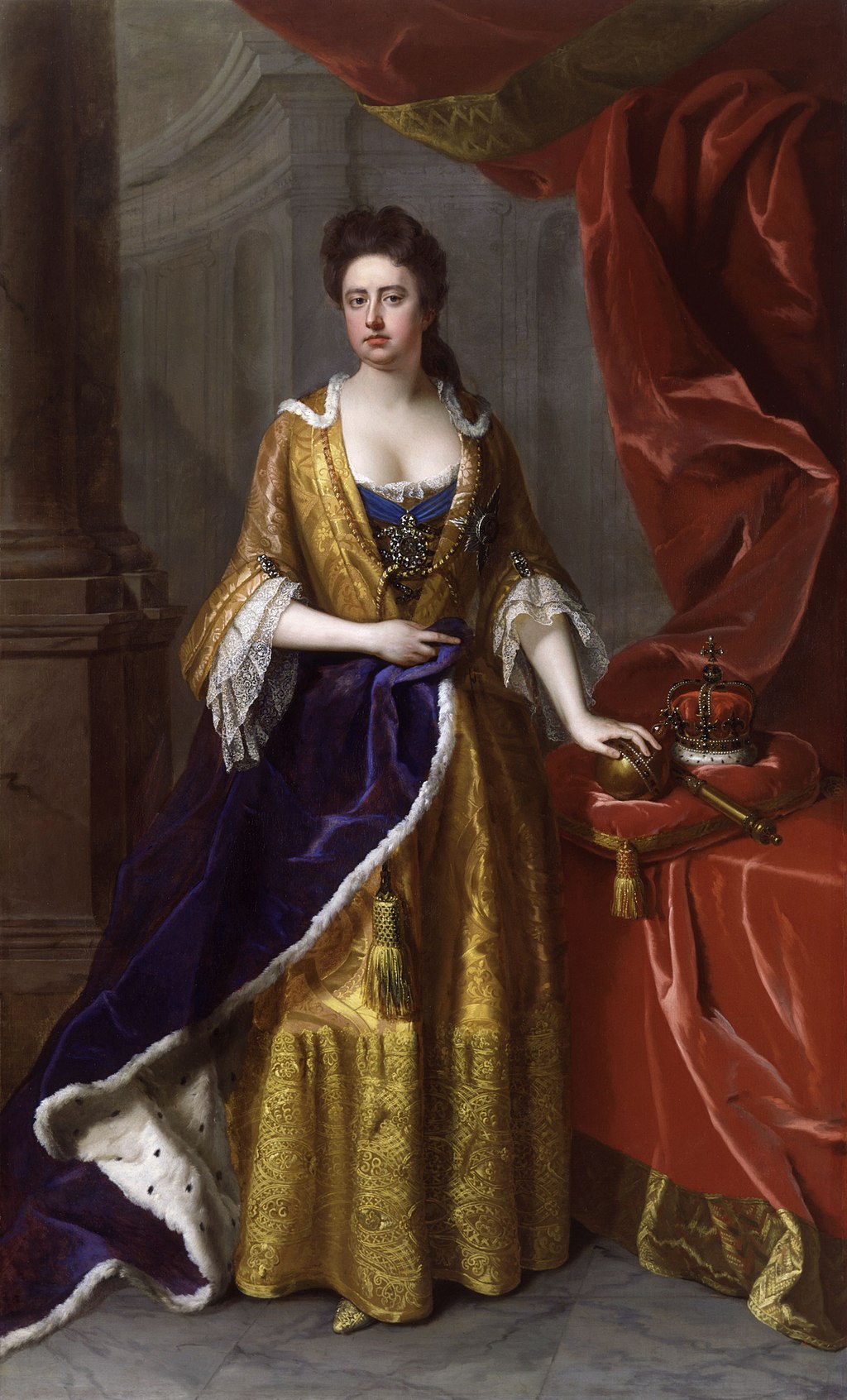23rd April 2022
Today in 1702 Queen Anne, wearing crimson velvet over a jewelled robe and a petticoat trimmed with diamonds and gold and silver lace, was crowned queen of England, Scotland, Ireland and France. Anne was the second daughter of a second son, a rebel against her own father the king and enthralled by her women favourites. She was in chronically poor health, neither educated nor prepared for rule, yet, the House of Stuart was so divided by politics and religion, that Anne unexpectedly made it to the throne and would be one of the few popular Stuarts: the seventh and last.
The Stuart story starts with the most famous and glamorous Mary, Queen of Scots. Her son, James, took the English throne when his Tudor cousin Elizabeth I died without an heir. James I became an unpopular and combative king. His second son - the highly-strung Charles I - became heir on the death of his more talented elder brother Henry.
Charles I continued his father’s irritable relationship with parliament, imposing unjust taxes, and attempting an unsuccessful coup that prompted the English Civil war. The rise of Oliver Cromwell defeated Charles, and the hopelessly indecisive king was arrested, tried and executed. (My fictional Cromwell soldier, Ned, recounts the trial and execution in my novel, Tidelands.)
His heir, Charles II, was invited to return to the throne in the vacuum of power after Cromwell’s death. Glamorous, witty, wildly promiscuous, Charles II fathered many children, but no legitimate heir, so the crown passed to his brother James.
James II was a determined Catholic, married to a Catholic. When the couple announced the birth of a son - a Roman Catholic prince of Wales - there was uproar and a rebellion in favour of the nearest male Protestant - William of Orange, married to James’ oldest daughter Mary, who invaded in 1688. (I tell this story in my next novel, Dawnlands)
The co-rulers William III and Mary II accepted a political settlement that controlled the power of English kings. Mary was animated and popular, tall and beautiful, but after a series of miscarriages, she died of smallpox at just 32, without an heir. William ruled without her until his death and then the crown passed to Mary’s younger sister.
Which brings us to Anne. Unlike her sister, Anne was gout-ridden and short-sighted but had the luck to come to the throne at a time of military success, colonial expansion, and increasing wealth through trade – a real winner if you like that sort of thing. (Not everybody did or does). She combined the kingdoms into the United Kingdom of Great Britain and made Britain a major military power. Tragically, none of Anne’s many children survived to adulthood and the Stuart dynasty ended with her death aged only 49 in 1714.
Image: Queen Anne by Michael Dahl, c. 1705, NPG 6187
